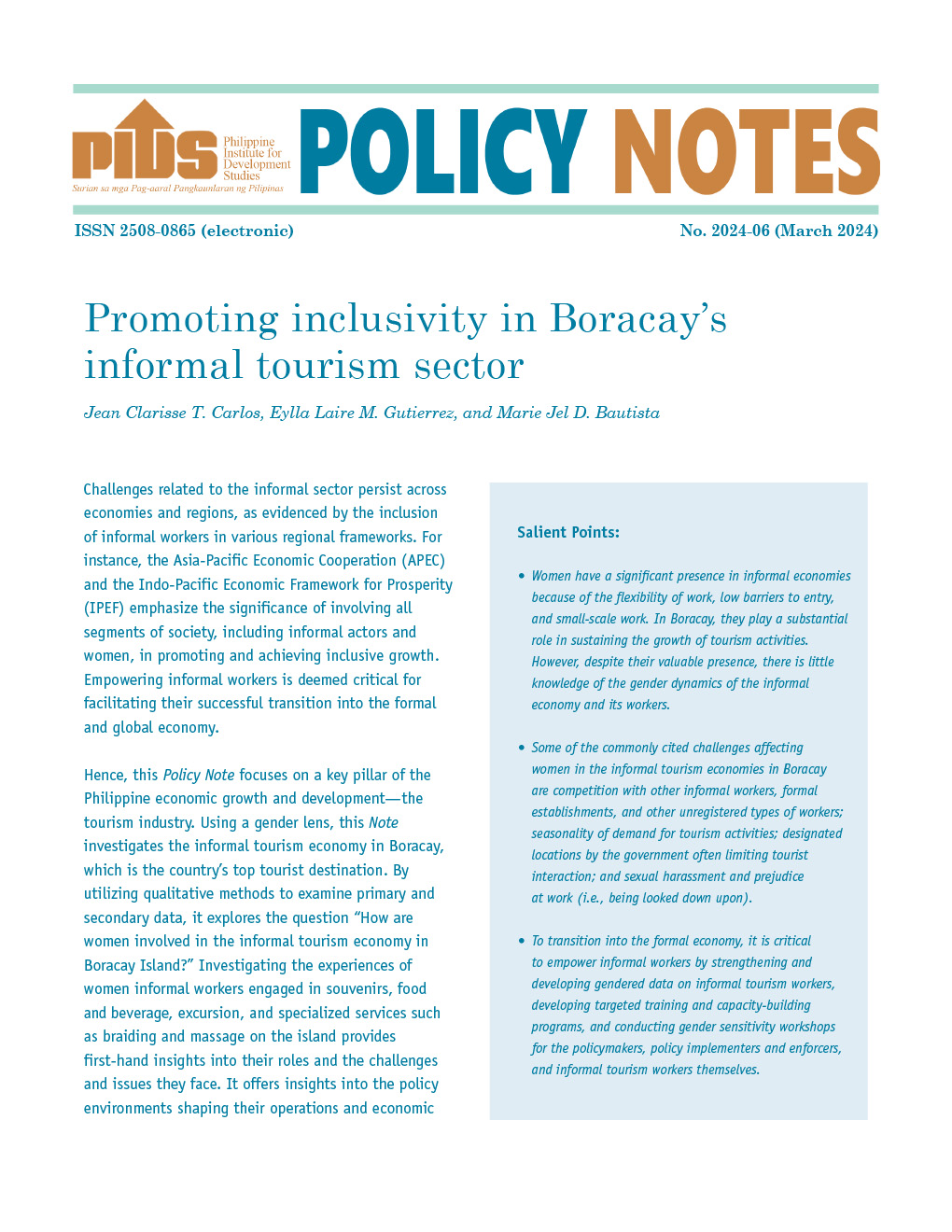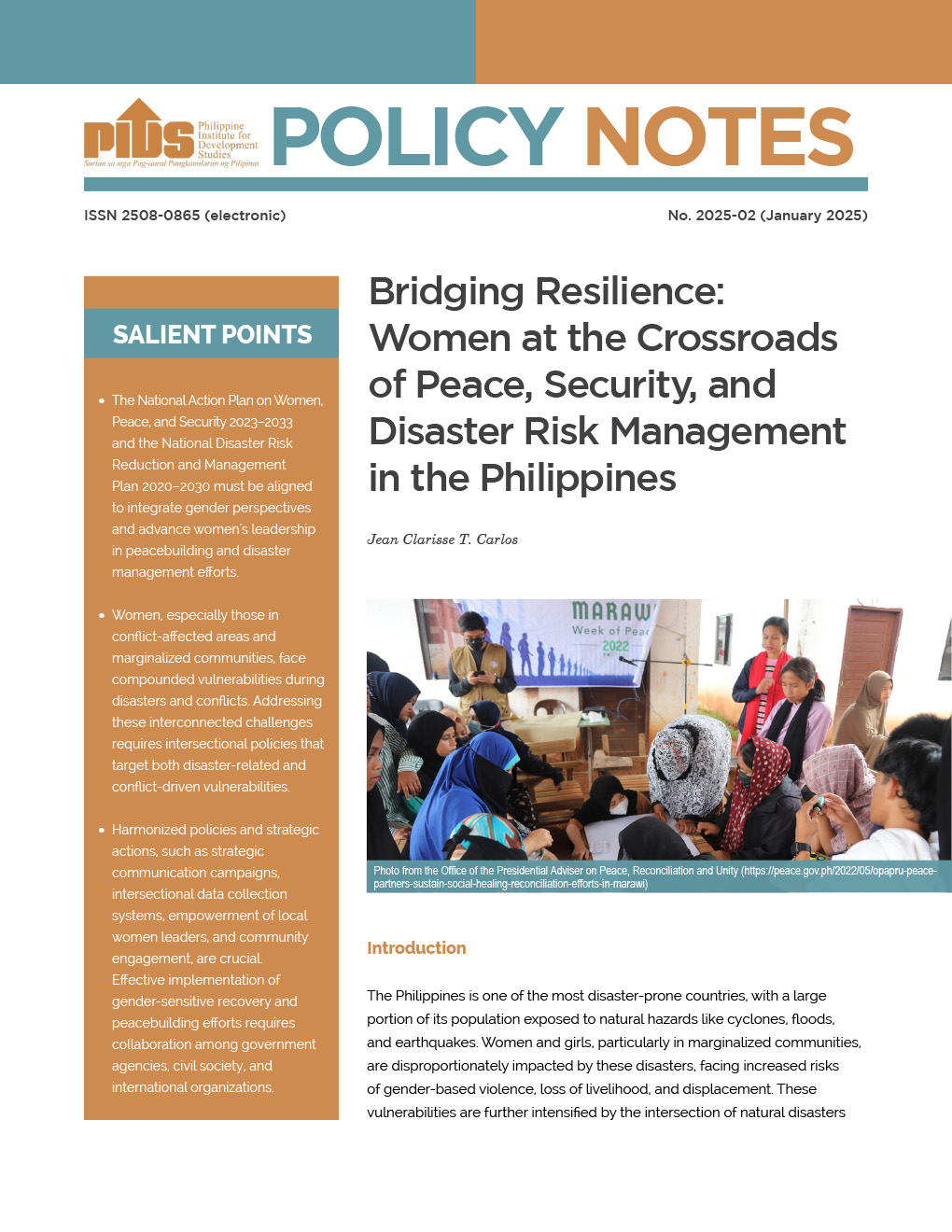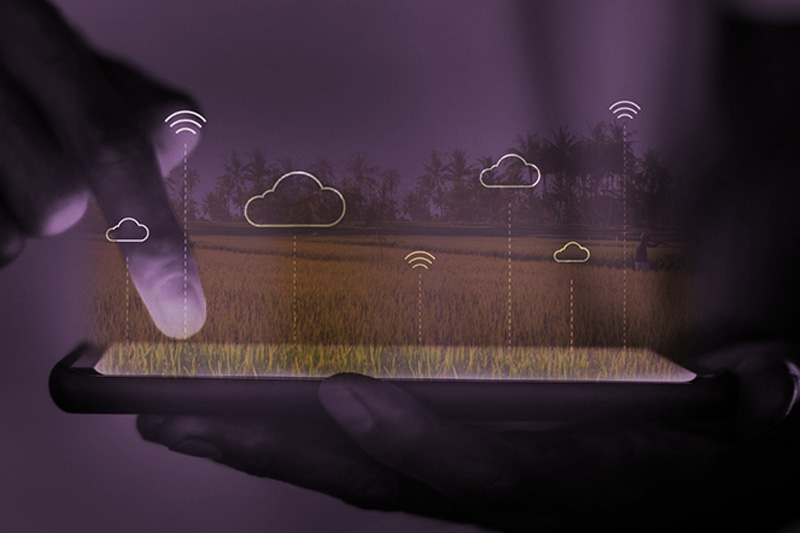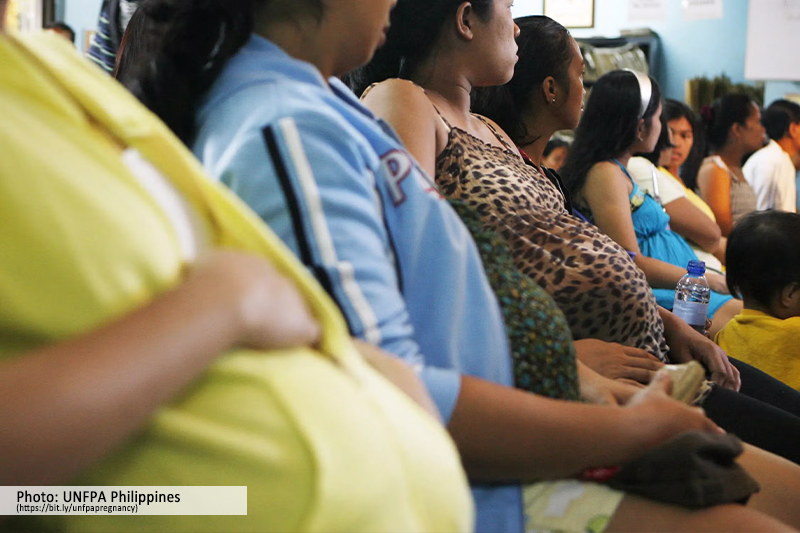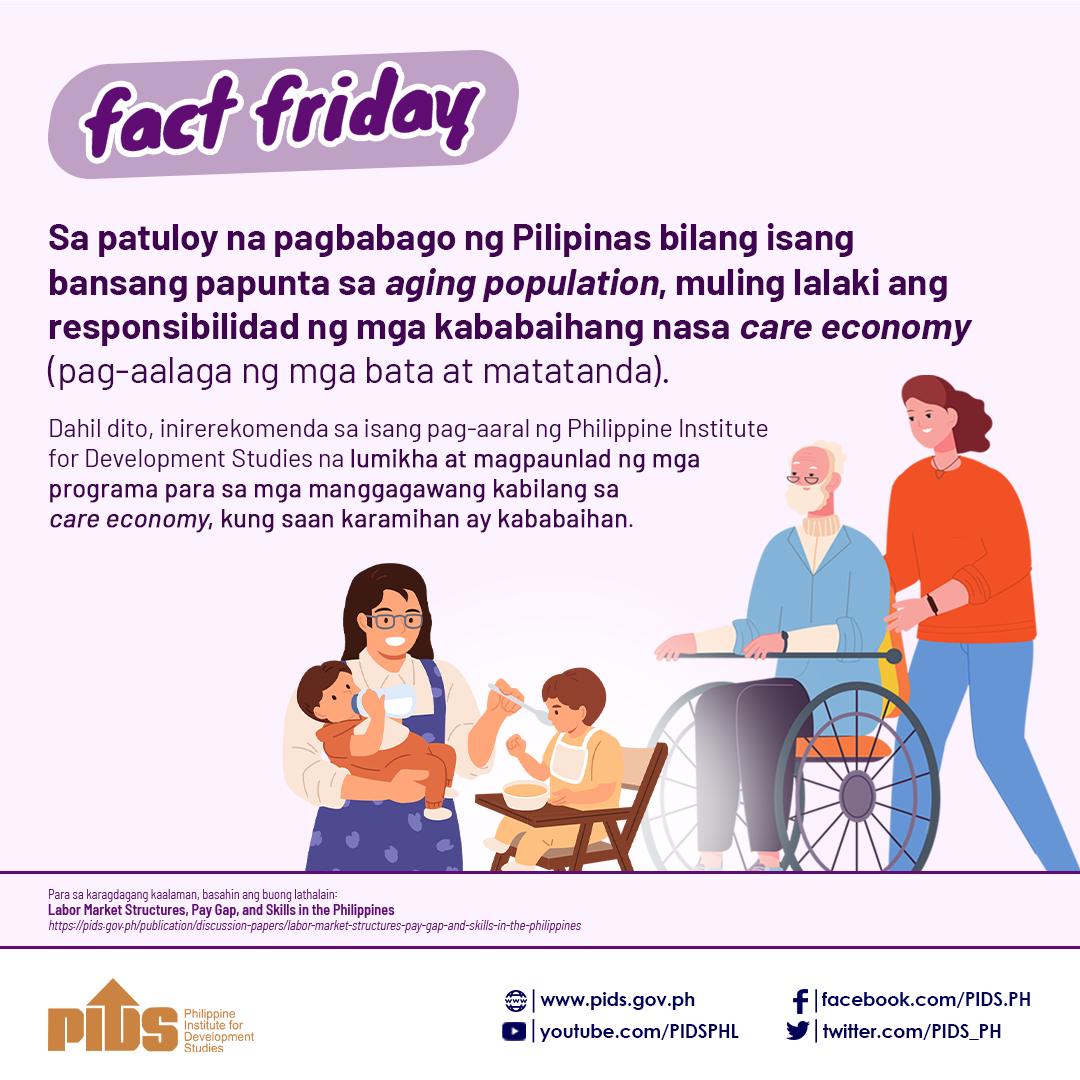WEATHER disturbances and gender are two major factors affecting energy consumption, and understanding their effects can help the government find cheaper sources of power, according to a study by state-owned think tank Philippine Institute for Development Studies (PIDS).
Typhoons can destroy trees [that]provide more sources for firewood and can bring about heavy rains [that]wash out possible sources of biomass. It also disrupts the processes to produce these energy sources. Firewood takes a longer time to dry up and charcoal making halts. Heavy rains brought by typhoons can cause landslides or damage to roads, which can affect the transport of LPG (liquefied petroleum gas),” PIDS research fellow Connie Bayudan-Dacuycuy said in a PIDS policy note.
During the dry season when the heat index rises, energy consumption increases, and “households turn to the most convenient energy source to power cooling appliances,” Dacuycuy said, citing data from the Household Energy Consumption Survey and the Philippine Atmospheric, Geophysical and Astronomical Services Administration.
The heat index is a human discomfort index that measures the temperature that the human body perceives or feels.
Households use electricity on the basis of routines established over time. When faced by shocks, these routines and associated energy use will adjust. Hence, in the face of persistent above-normal heat index, households will prefer to use airconditioning units all day, instead of electric fan on certain hours,” Dacuycuy said.
Electricity is the most popular energy source in rural and urban households, accounting for 75 percent and 89 percent of households, respectively, the PIDS note said. LPG is the next popular choice, with 25 percent of rural and 56 percent of urban households using it. Charcoal is used by 6 percent of rural households and 15 percent of urban households.
Electricity use is lowest among low-income households while highest among high-income households. Poor households consume a monthly average of 60 kilowatt- hours (kWh) while middle-income households consume around 210 kWh. High-income households consume almost twice that of the latter. Similar pattern is observed in the households’ average monthly LPG use. However, middle- and high-income households’ use is closer at around 40 and 45 kilograms, respectively,” it said.
Dacuycuy also said female-dominated households have the highest electricity and monthly LPG consumption.
While women are more likely to stay at home, men are more likely to go out to work or play. During weather fluctuations, the response of balanced and female-majority households to increase electric consumption more than male-majority households is not surprising,” the author said.
Dacuycuy urged the government to find cheaper alternative sources of electricity, especially for households located in geographically isolated and disadvantaged areas, and more job opportunities for women.
One possible project is the saline solution that can power lamps. The government should improve and upscale it to widen its scope and application,” she said.
Typhoons can destroy trees [that]provide more sources for firewood and can bring about heavy rains [that]wash out possible sources of biomass. It also disrupts the processes to produce these energy sources. Firewood takes a longer time to dry up and charcoal making halts. Heavy rains brought by typhoons can cause landslides or damage to roads, which can affect the transport of LPG (liquefied petroleum gas),” PIDS research fellow Connie Bayudan-Dacuycuy said in a PIDS policy note.
During the dry season when the heat index rises, energy consumption increases, and “households turn to the most convenient energy source to power cooling appliances,” Dacuycuy said, citing data from the Household Energy Consumption Survey and the Philippine Atmospheric, Geophysical and Astronomical Services Administration.
The heat index is a human discomfort index that measures the temperature that the human body perceives or feels.
Households use electricity on the basis of routines established over time. When faced by shocks, these routines and associated energy use will adjust. Hence, in the face of persistent above-normal heat index, households will prefer to use airconditioning units all day, instead of electric fan on certain hours,” Dacuycuy said.
Electricity is the most popular energy source in rural and urban households, accounting for 75 percent and 89 percent of households, respectively, the PIDS note said. LPG is the next popular choice, with 25 percent of rural and 56 percent of urban households using it. Charcoal is used by 6 percent of rural households and 15 percent of urban households.
Electricity use is lowest among low-income households while highest among high-income households. Poor households consume a monthly average of 60 kilowatt- hours (kWh) while middle-income households consume around 210 kWh. High-income households consume almost twice that of the latter. Similar pattern is observed in the households’ average monthly LPG use. However, middle- and high-income households’ use is closer at around 40 and 45 kilograms, respectively,” it said.
Dacuycuy also said female-dominated households have the highest electricity and monthly LPG consumption.
While women are more likely to stay at home, men are more likely to go out to work or play. During weather fluctuations, the response of balanced and female-majority households to increase electric consumption more than male-majority households is not surprising,” the author said.
Dacuycuy urged the government to find cheaper alternative sources of electricity, especially for households located in geographically isolated and disadvantaged areas, and more job opportunities for women.
One possible project is the saline solution that can power lamps. The government should improve and upscale it to widen its scope and application,” she said.

